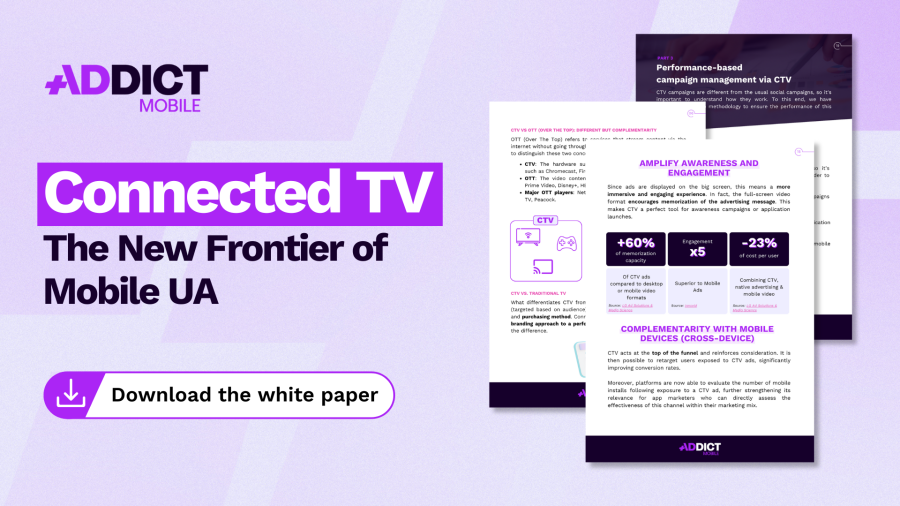Our 4 Tips for UA Creatives That Convert
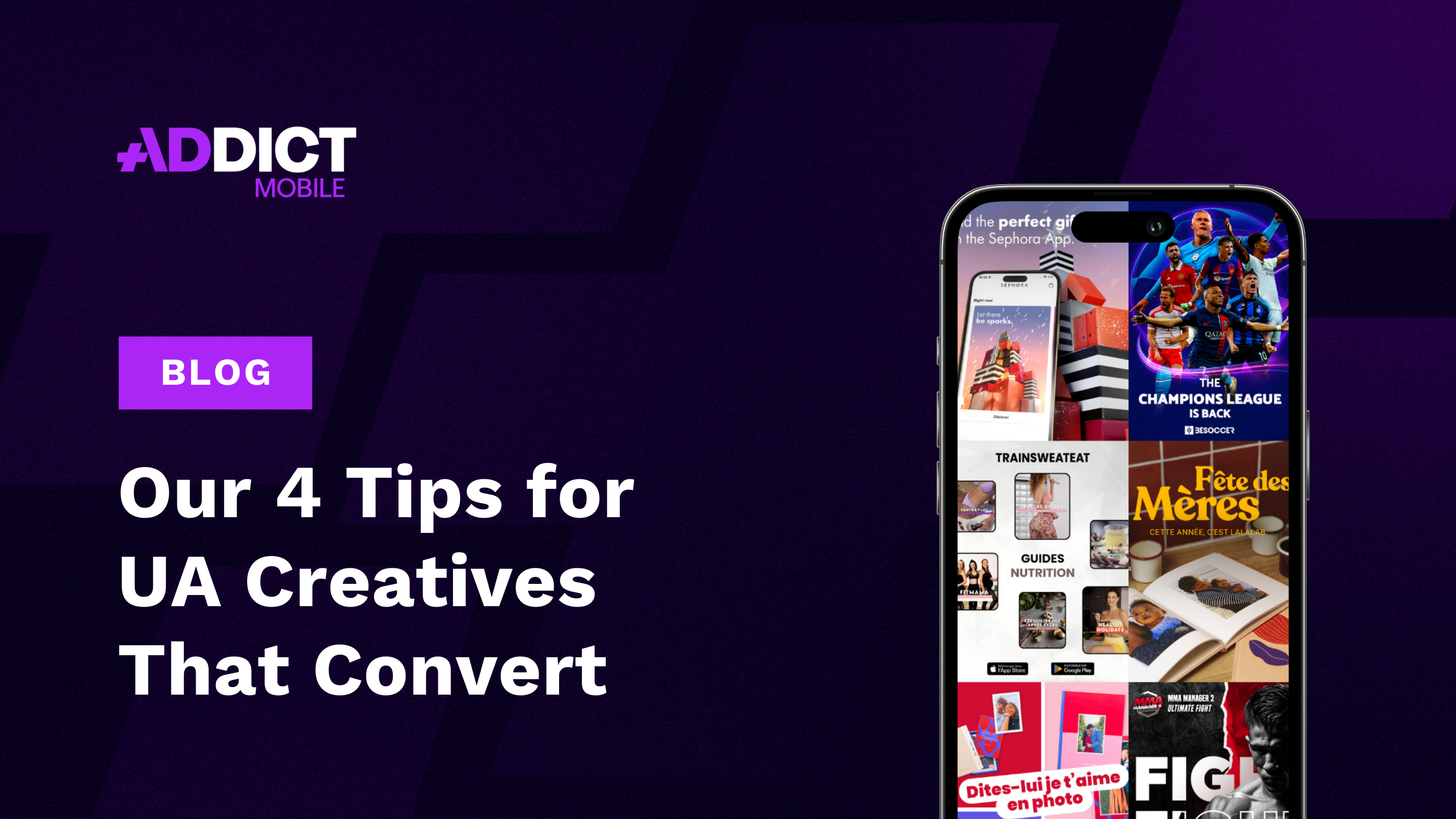
We cannot emphasize enough: creativity is crucial for the success of user acquisition campaigns. It’s an essential element that can greatly impact performance and drive success. But how can you make sure you are producing UA creatives that convert? Here are our 4 tips.
Adapt the message to the audience for successful contextual creative targeting
Recent shifts in the mobile market focused on data protection, have profoundly impacted the mobile sector. The introduction of App Tracking Transparency (ATT) and SKAdNetwork has limited targeting capabilities, and initiatives like Privacy Sandbox are reinforcing this trend. Consequently, new methods are needed to effectively reach and target users while respecting their privacy.
At Addict Mobile, our testing across various clients has demonstrated that using specific creatives proves to be very effective for targeting well-defined audiences. Therefore, creative content is emerging as a new alternative targeting tool.
The effectiveness of this approach relies on a detailed understanding of users: their motivations and needs, as well as their concerns and the barriers that might make them hesitate before clicking. This enables effective segmentation of users and the creation of ads that speak directly to them. This analysis should be conducted beforehand to provide precise briefs to the creative teams and to produce tailored visuals that convert.
The goal is to allow the algorithms of the platforms to operate without restrictions and to select the most relevant users based on the creatives used. For this to be successful, the creatives must be perfectly aligned with the profiles of the different target audiences.
Adapting to platform’s creative guidelines to maximize impact
It is essential to clearly distinguish UA creatives from those used for branding. Indeed, the more a creative is identified as an ad, the quicker users will ignore it. Each platform has its own guidelines, which necessitates adapting to each one.
TikTok :
Native content: Focus on creatives close to organic content: short videos produced by users, such as UGC, a format that has become essential in user acquisition.
Engagement: Make an impact and adopt the TikTok style: a captivating hook in the first few seconds, using filters, challenges, or humor to encourage users to watch the content through to the end and convert.
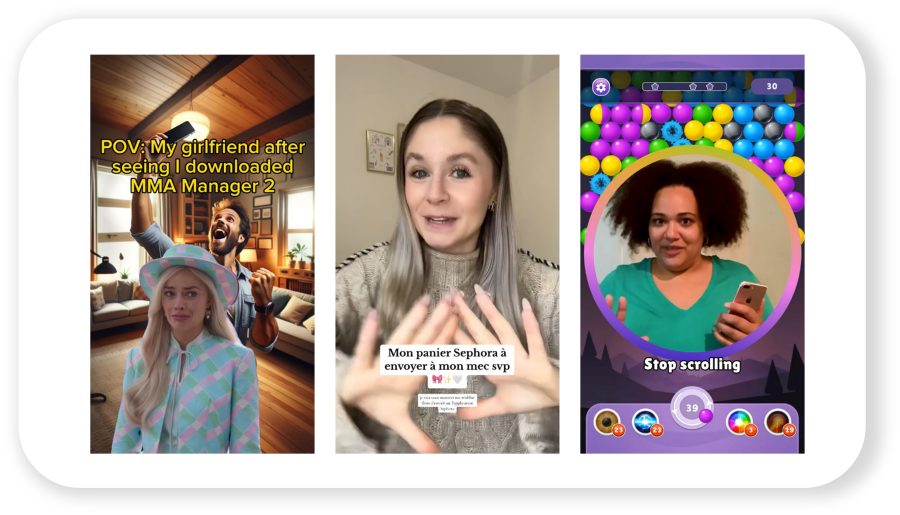
Creative renewal: Creatives can quickly become stale. Therefore, it’s crucial to regularly refresh visuals to avoid ad fatigue.
At Addict Mobile, we often employ a mix of UGC or Spark Ads, trendy videos that align with the platform’s trends, and more traditional formats like video, motion, and carousel.
Google :
Creative excellence: Creative excellence is a set of best practices that must be respected in order for the platform to assign a rating that will influence campaigns. Google recommends adhering to these practices to maximize the impact and effectiveness of campaigns. The platform rewards the adaptation of creatives across multiple formats (square, landscape, portrait) to automatically cover the maximum number of placements.
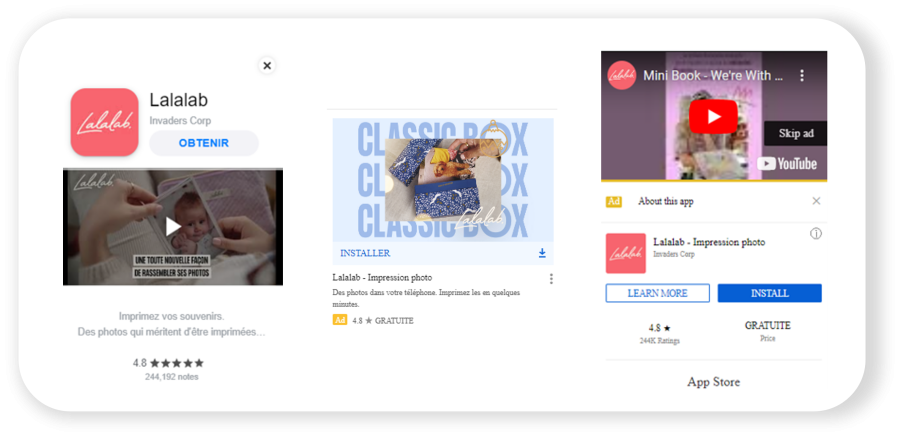
Targeting through Creatives: Google Ads is an excellent example of how creatives can be used to target users. Since demographic or interest-based targeting at the campaign level is not possible, it is recommended to structure Ad sets by themes. This approach allows for a broader target audience and, consequently, can increase the number of conversions.
Meta :
High production apability: With four different formats on the platform, it is essential to adapt the formats of the creatives (9:16, 4:5, 1:1, 16:9) to ensure they are broadcast across each inventory: Facebook, Instagram, Messenger, and Audience Network.
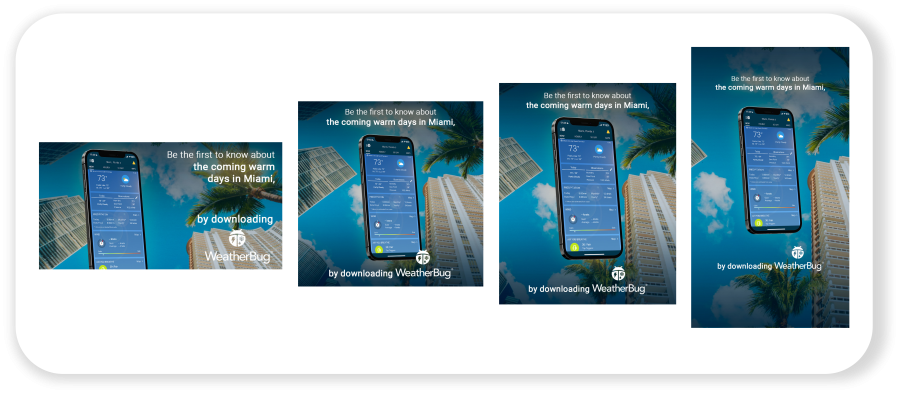
Meta also offers other formats that allow for the diversification of visuals and reaching a broader audience.
- Dynamic Product Ads (DPA), which use the product catalog to generate automatic advertisements updated based on price changes and product availability.
- Custom Product Pages (CPP) on iOS that direct users to a store-specific page from an ad. This can highlight features related to the app’s current events or the ad the user clicked on.
Mobile-optimized videos: Opt for concise videos that capture attention right from the start, include music and subtitles, follow trends, and leverage UGC.
Simple static creatives: Limit visual elements to better highlight the value proposition.
Snapchat :
100% Video: When designing videos for the platform, it’s crucial to remember that the first three seconds are key for conversion. The visuals should be dynamic and the sound should not be neglected since users tend to use the app with the sound on.
Utilizing ad placements: The platform currently offers two complementary placements for optimal performance:
- Story Ads: This format appears as a tile in the user’s Discover tab feed, followed by a series of videos, each featuring a call to action (CTA).
- Snap Ads: A format that appears between the stories of content followed by the user.
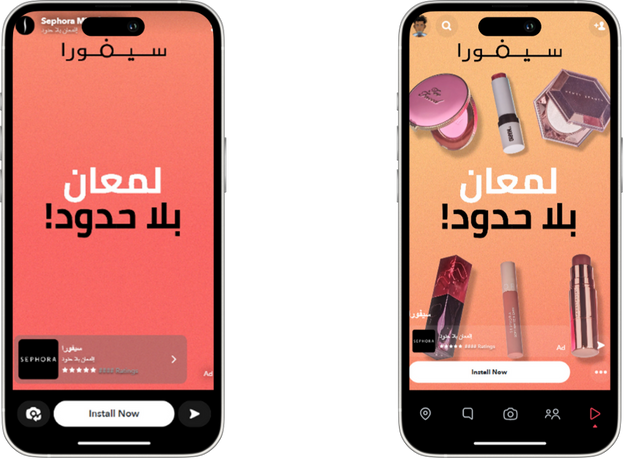
It is recommended to test both formats to fully leverage the platform’s potential.
Test and test again to identify winning concepts
Creative content in UA is a key success factor. We know that high-performing creatives positively impact CPI, CPA, and ROI, and also generate significant volume. The main challenge is finding the right balance between creatives that capture attention and those that drive action. A high click-through rate does not necessarily guarantee actions like conversions or subscriptions.
At Addict Mobile, our experience shows that among 15 to 20 concepts, the performance of a campaign often relies on just 2 or 3 strong concepts that stand out. This highlights the importance of having a multitude of visuals in UA and especially of conducting creative tests to identify these winning concepts. It’s imperative to test as much as possible. This includes A/B testing on various visual elements such as CTAs, colors, backgrounds, hooks, and visual effects, as well as very different concepts.
It is also essential to be open to all types of tests, even the most daring, as they can often reveal effective concepts and approaches for capturing users’ attention. The goal is to increase the chances of finding the winners and the combination that will produce the best results over the long term. It’s important not to limit oneself because even if a tested concept does not resonate with the audience, the expenses remain low and the risks are limited.
Exploring the potential of GenAI for time-saving and flexibility
GenAI is THE topic of the moment and it perfectly applies to user acquisition. At Addict Mobile, we have conducted numerous tests for our clients’ campaigns. We’ve utilized various tools to generate backgrounds, voice-overs, visual assets, and even UGC videos.
GenAI adds significant value. First, it saves time by automating time-consuming tasks (such as generating assets, backgrounds, or voice-overs), which frees up creative teams for more strategic and creative tasks, like trend monitoring. GenAI also offers greater flexibility by quickly generating creative elements that are non-existent or unavailable online. This facilitates the creative process and expands the capabilities of the studio without requiring significant resources.
However, GenAI has its limitations. It may not be as responsive as graphic designers to the constantly evolving UA environment since it requires a learning phase. Moreover, GenAI cannot replace human creativity. Tools struggle to generate original ideas and to establish emotional connections with users, which are essential for engaging them and prompting action. Finally, a nuanced understanding of the of the broadcasting context remains a challenge for GenAI tools, which do not grasp the nuances specific to each vertical and brand.
So, rather than replacing graphic designers, GenAI aims to support them, enhancing their productivity and flexibility to meet UA challenges, while allowing them to focus on aspects that machines cannot handle.
Addict Mobile provides a creative service at no additional cost, included in campaign management. An in-house studio composed of more than 12 experts specialized in UA challenges and proprietary automation technologies enables the generation of large volumes and quick adaptation of visuals according to needs.
Do not hesitate to contact the teams to learn more and discover how Addict Mobile can help maximize your campaigns and generate more ROAS.
NEWS
Article in relation

The importance of Firebase in managing Google UAC…
You’ve probably noticed that for some time now Google has been recommending the integration of Firebase for managing mobile application installation campaigns on...
Published on 15 June 2022
Are creatives the new targeting in a post…
The arrival of iOS 14 has limited ad targeting options: it means less data collected and the data is less accurate. So we...
Published on 12 April 2022
New technology for declining video in record time,…
With this new technology, we address one of the major challenges in user acquisition: continuously updating creative assets to avoid the phenomenon of...
Published on 2 February 2022


